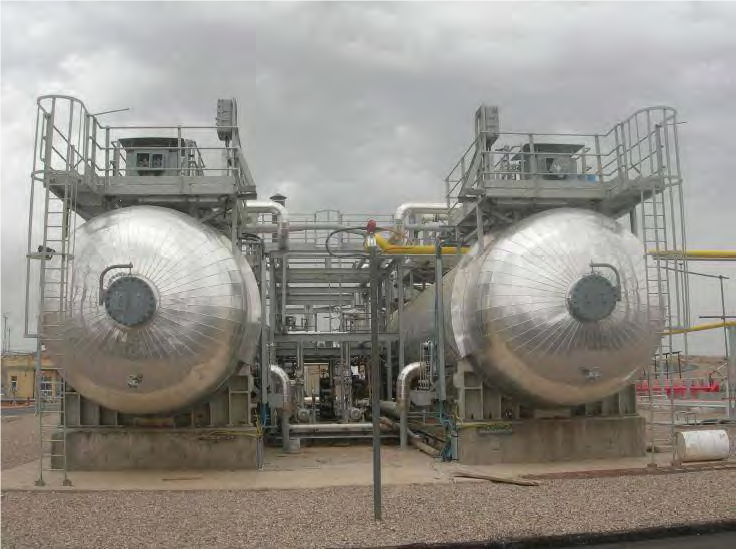The quantity of BS & W contained in the oil depends on many factors, including the gravity and viscosity of the oil, the production rate and temperature, secondary recovery techniques in use such as water re-injection and the age of the oil field. The dehydrating/desalting process scheme varies depending on the quantity of formation water associated with the crude oil and the treated crude specifications. A dehydrator is used to remove large quantities of water from an oil stream and is often the first stage in a two or three-stage dehydrating/desalting system, depending on the product quality required. A desalter performs the same basic function as a dehydrator, but here fresh water is injected into the oil stream to dilute the saline formation water and is mixed with the oil using a mixing valve. In either the dehydrator or desalter unit the oil/water emulsion is resolved by introducing it into a high voltage electrostatic field inside the process vessel. The action of the electrostatic field coalesces the dispersed water phase and gravity causes the enlarged water droplets to fall and collect in the bottom of the vessel. This effluent water, that contains the various impurities removed from the crude, is continuously discharged to the effluent system. The clean crude oil flows from the top of the vessel. Depending on the product quality required, more than one stage of dehydration or desalting may be necessary. Fresh wash water is injected upstream of the mixing valve to the second stage desalter and the effluent water from this vessel is recycled to upstream of the mixing valve of the first stage dehydrator. This recycle water system leads to greater economy of water usage.
Get product catalog
